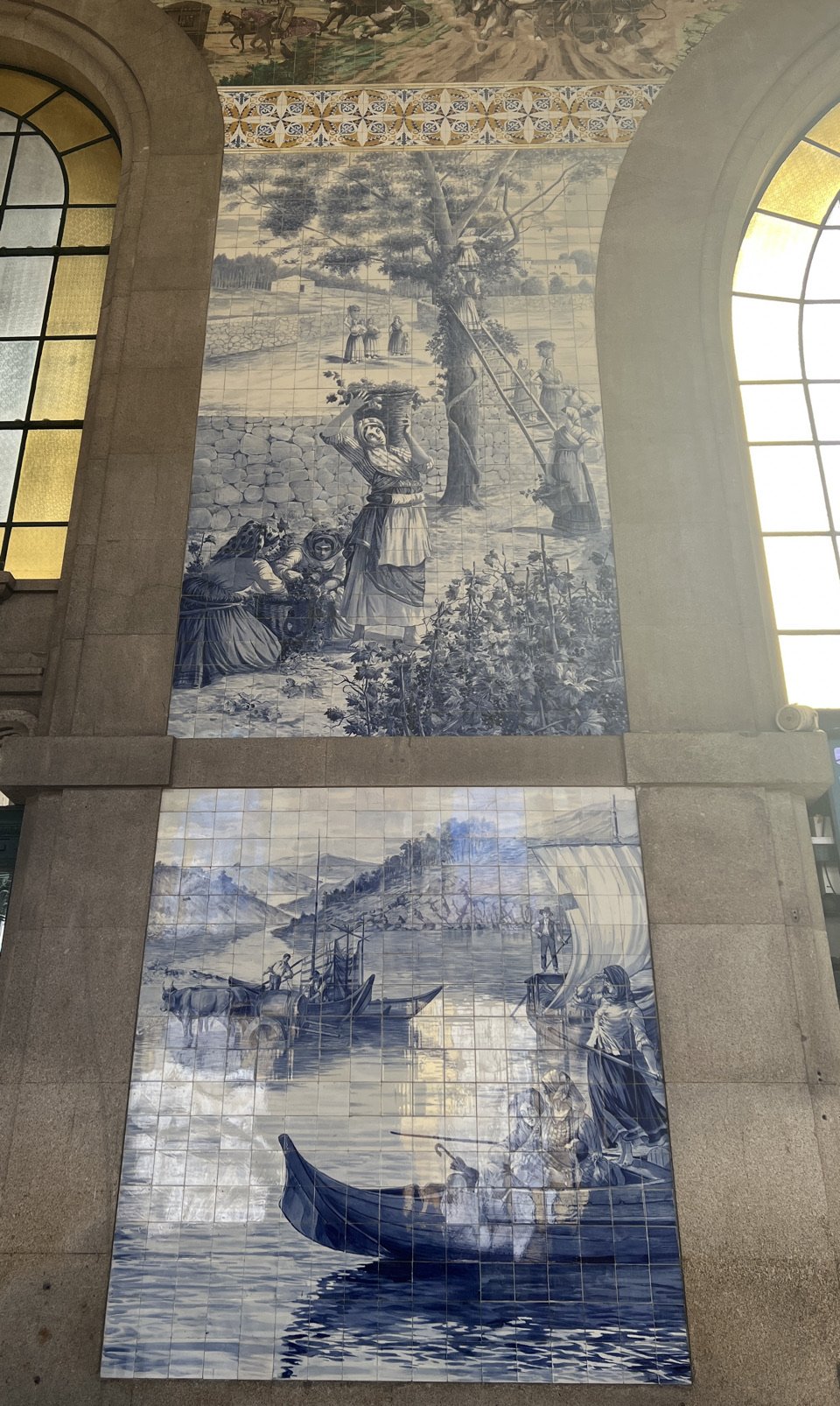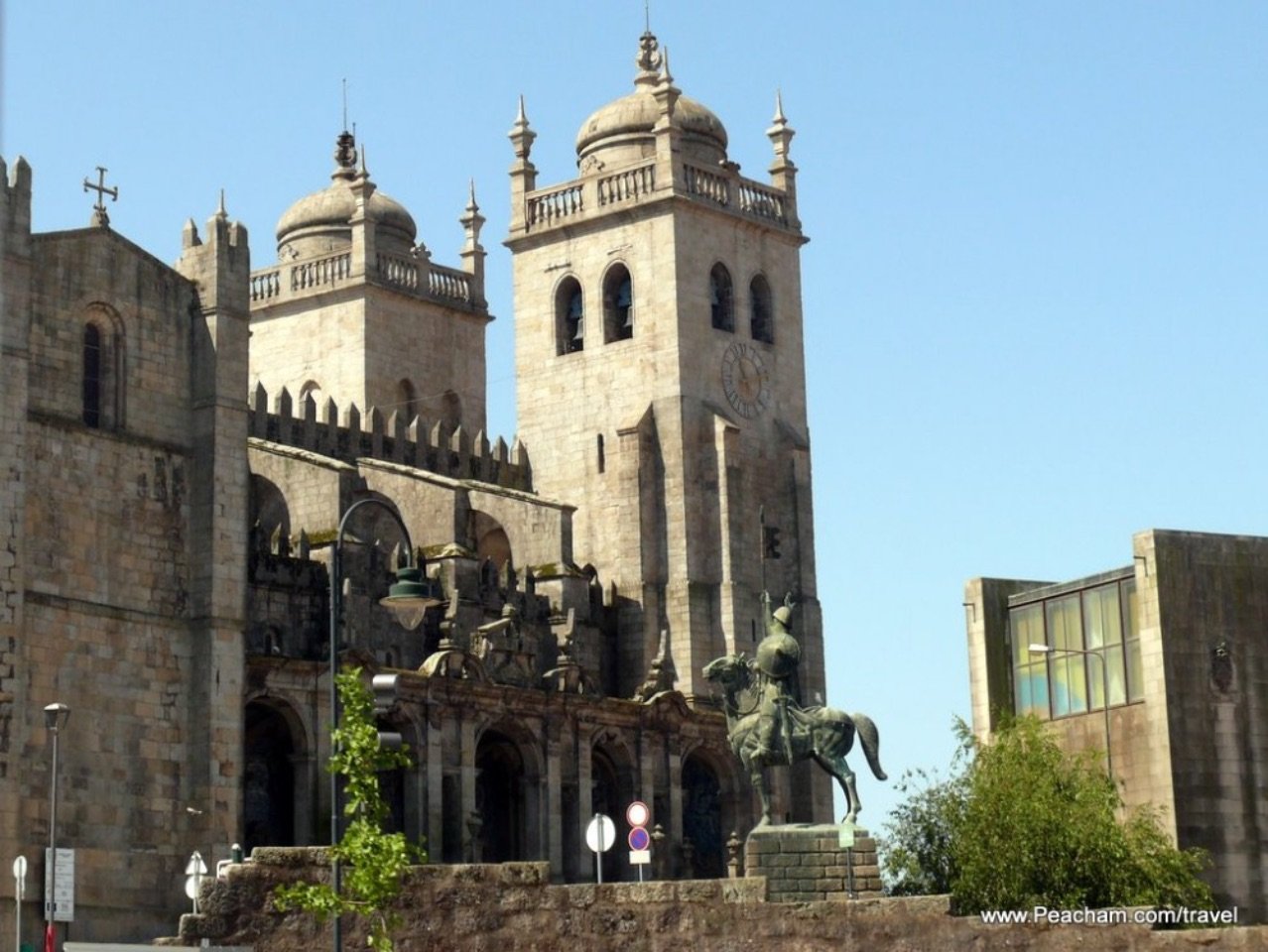Day 566 - Porto, Portugal
Exploring Porto
We awakened to the sounds of squabbling seagulls outside our window. Apparently they had swept up the Douro River from the seaside for a conversation.
The night had banished the rain and the cobbled streets were bustling with sanitation workers emptying trash cans, students working their phones, a scattered tourist or two and locals traveling this way and that to work or errands. Cyndy was jonesing for some American style coffee and Starbucks, it turned out, was right across the street. Feeling a little guilty, we bought two old-fashioned, big cups of coffee, not the smaller espresso's or cappuccinos we had been drinking throughout Chile, Argentina, and Lisbon, and sat outside in the bright, chilly air at a small table to people watch.
Antonio, one of the Uber drivers we met, was talkative man, and a living, effusive library of information about Porto. His English is much better than my Portuguese. “This is the oldest and first city in all Portugal!” He exclaims as we swing through the streets. “Porto! - they name the country Porto. Not for Lisbon! Porto was the first capital and then they make Lisbon the capital.” He waves his one free hand. “Okay! YOU be the capital! We are easy-going. We have the port wine. We relax.”
He has other thoughts. “For many years, I sell gold and silver so I have clients all over and learn the foods and drink.” He tells us we must try, “Port-tonic. Tonic water with port. They go together!” Most make it with a bit of fruit, ice and tonic water, but Antonio says he prefers three coffee beans rather than fruit to give it extra flavor. That's my idea. Maybe a Portuguese version of Red Bull?
Now he is on to history. He explains that Napoleon was never able to conquer Porto because they cut the ferry lines on the Douro River, making it impossible for him to take the fort that still stands on a precipice above the big river.
“And,” he adds with a flourish, “they move the food away to Lisbon, so that Napoleon’s army has no food.” But they left the pork, beans and rice behind and that became a national meal. He recommends it, but adds another Porto delicacy: Francesinha, a sandwich, he says, inspired by the French baguette with its ham, cheese and butter crammed between a French bun (thus it’s name). “Excepting in Porto we do it different - four kinds of meat - beef, turkey, ham and sausage - with cheese on top, and a special secret sauce all over top a dark black forest kind of bread. The secret,” he whispers, “is in the sauce. Nobody can eat just one.” Sounded more like Pittsburgh’s famous Primanti Sammich (as they say in my town) - capicola ham, a fried egg, melted cheese and a handful of French fries crammed between to slabs of Mancini’s Italian bread, than a French baguette, but we tell him we’re determined to track a Francesinha down, even if it kills us, which it might.
We’re nearing our destination but Antonio has more to share. “For fish go across the Douro to the fishermen, where they have their boats. Small restaurants. Not expensive. The friendliest and best seafood.” By the time we arrive we've only been traveling 15 minutes but I feel like I received 100 years of inside information about the town. We wave “Obrigado!” and Antonio turns his gray, tightly capped head around with a grin before he pulls out. “Enjoy Porto and come back to live here!” he yells. And then he's gone.
We heard that suggestion more than once. People from the United States of a certain age often explore living here. It's not a bad idea because the city is, just about, perfect.
Back our B&B it’s time to explore the neighborhood. As in Lisbon, renaissance architecture spills off Porto's many hills and winding streets. Just a few hundred yards away we find ourselves in the São Bento part of Porto, a World Heritage Sight. Passengers passing through the train station here can feast their eyes on the largest ceramic renderings in Portugal, maybe Europe. Masterful works of realistic art forty to fifty feet high. Once you have seen them, they are difficult to leave behind. And nearby is another beauty: the Igreja dos Congregados, a lovely chapel commemorating St Anthony who was born in Lisbon (see previous post about St. Anthony). Just up the street at the summit above Sao Bento is Se do Porto (Porto Cathedral) built in 1100. It is immense and took 500 years to complete.
For a city this size, Porto had a lot to offer and we were glad we were finally taking a little time to do that because we did not when our journey took us into Portugal a year earlier after we exited Morocco. Even more than Lisbon, I found Porto to be one of Europe’s most embraceable cities. Cyndy agreed. Maybe that explains why so many Americans are moving there.
Fado and the Douro - Day 566
In the afternoon, friends, Dennis, and Denise (yes, that's their real names), Pittsburghers who happen to be in Portugal, asked us to join them on a river cruise of the Douro River. The Douro is big, a winding waterway that runs from its source in the central mountains of Spain across the Iberian Peninsula into the Atlantic at Porto.
This would be an intimate trip, just the four of us and Denise and Dennis’s longtime friend Steve, all of whom Alex, our captain, greets enthusiastically at the dock. Alex looks 17, but assures us he has the credentials and the experience to take us on a comfortable two deck motorboat down the river to the ocean and back.
On the water, Alex tells us about, the mammoth bridges that span the Douro. The first one yawns several hundred feet above the river, great steel-blue girders designed by Gustave Eiffel, the same man who engineered the Parisian tower that made his name world famous. At the time it was the largest arched bridge in the world, and locals feared it would collapse.
“But,” says Alex as we drift beneath it, “It's still here! As you can see.” Farther down another bridge looks very similar to Eiffel’s, and that's because one of Eiffel's students designed and built it.
“This bridge has a good story,” says Alex in almost flawless English. “Once again locals were sure that when the supporting pillars used during construction were removed, the bridge would fall. So the engineer took his family in a boat on the river and waited below while the last supports were removed to prove that it was safe.”
As we come toward the mouth of the Douro old ships of dark wood bob along the quay of Porto’s sister city Alfurado. Some are laden with bulging wooden barrels, home to the unique drink Porto made famous: port. The grapes are grown and harvested in the inland micro-environments of the Douro Valley, and transported by these ships down the great river, distilled and distributed around the nation and the world. This has been going on a good 400 years.
FADO
After a shower and some note taking it's time for Fado, another distinctive Portuguese creation. At 8:30 the old city’s circuitous routes wind us to Restauronte Tipico O Fado (literally meaning “A Typical Fado Restaurant”) for some excellent octopus, sole and music. Cyn and I try the port-tonic that Antonio (the Uber driver) mentioned earlier, and it is delightfully refreshing.
The restaurant is large, filled to the seams with locals and tourists and elaborate paintings and belle epoch furniture and lamps. Forty-five minutes into the meal a trio of players begin to set up on the restaurant dais. A mandolin, guitar and cello appear almost magically, and the three players tune their instruments. Then a woman with sharp features and dark hair flowing to her back arrives and stands quietly before us. She nods and then suddenly pierces the evening with her powerful voice. She is telling a story, and it is not a happy one. None of us Americanos can understand a word, but we know that sadness and longing is in every note. Her voice is unique, neither operatic nor whining, but mournful. It trills and soars and then descends into sadness, and you are moved. This isn't a dirge exactly, it's a cry to others, a story that the singer wants to share, because in the sharing, perhaps, there is some solace. Later, still accompanied by the excellent string trio behind him, a man sings a happier song, maybe to ensure people don’t leave the restaurant bent on leaping off the Eiffel Bridge from depression.
Fado springs from a melancholy history that emerged after Napoleon was ousted from Portugal and the Portuguese government returned from exile in Brazil. It draws on Brazilian and African traditions. You might consider fado the Portuguese version of America’s old-style country music. You know, “My mother got runned over by a gosh, darn train." But it's peculiar to Portugal in the way that blue grass and country are to American music. It doesn’t sound the same, but the expression comes from the country where it was created.
The music left me feeling both inspired and sad. Afterwards we retreated ourselves to our hotel. It was time to prepared for our journey by train the next morning to Madrid.


















